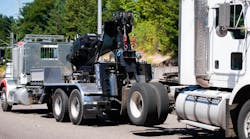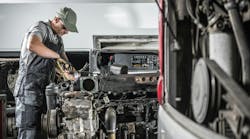Vehicle makers and component suppliers are making products more reliable and durable than ever before. But no matter how well made a truck or component is, from time to time things are going to go wrong or at the very least, trucks are going to need maintenance.
When a truck is in for maintenance or repair, the goal is to get it back on the road as quickly as possible. One of the interesting things I have learned is that it is not usually the repair itself — the wrench turning — that is the time consuming part of the repair. Most of the delays in the repair process are the result of communication breakdowns, paperwork snafus or parts not available when needed.
What is extremely frustrating for many truck owners is not knowing the status of the repair at any given point during the process.
The Technology & Maintenance Council is hoping its new Vehicle Maintenance Repair Standards (VMRS) Code Key 24: Maintenance Status will help alleviate some of that frustration.
Before I talk about the new Code Key, let me just give you a quick overview of VMRS. VMRS is best described as the universal language of repair. It is a series of Code Keys — a shorthand of sorts — that describes all the parts of repair and maintenance and operations. It ensures everyone knows exactly what caused a problem and what is being done to fix it.
One of the best things about VMRS is that it is a living document meaning that suggestions for changes can be submitted and if deemed appropriate, a Code Key change will be made.
Which brings me to Code Key 24. It was developed to improve repair process communication to let the truck owner know exactly how the repair is progressing. Having actual data allows fleets to track downtime trends and see what is causing delays. Once they know where the delays are, they can work to fix the problem in their own shops or with their service providers.
There are 15 codes associated with Code Key 24. They are used to identify the different parts of the repair process:
- Code 01: En route to service facility
- Code 02: Onsite repair
- Code 03: Mobile repair
- Code 04: Waiting on service bay/technician
- Code 05: Diagnostics — Triage
- Code 06: Diagnostic in progress
- Code 07: Repair in progress
- Code 08: Technical support in progress
- Code 09: Parts on order
- Code 10: Parts on back order
- Code 11: Waiting for authorization
- Code 12: Road test
- Code 13: Repairs complete — Ready for delivery
- Code 14: Repairs complete — Delivered
- Code 15: Pickup — Repair at later date (Vehicle operational)
As you can see, these codes will help you see the progress of the repair and then analyze where the bottlenecks are. If you constantly see code 10 (parts on back order), you should review your inventory and ordering practices to make sure you have the right parts when you need them, or to point out to your service providers that they need to do a better job of having parts on hand.
Or if you frequently see code 11 (waiting for authorization), you should look inside your own organization to see what you can do to speed up repair authorizations.
VMRS code keys cover many aspects of vehicle repair and Code Key 24 is just one more way to streamline the repair process and make things more transparent for everyone involved.


